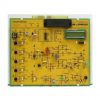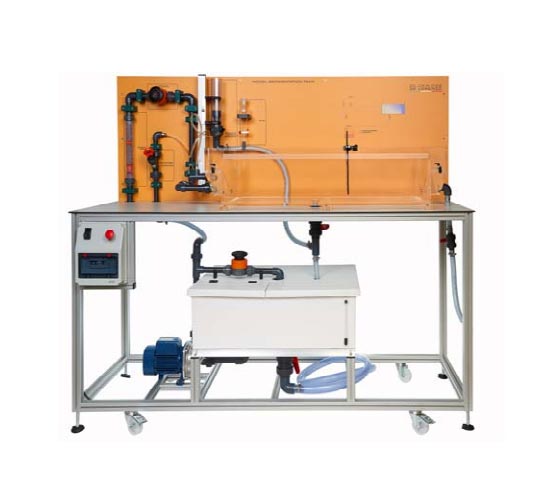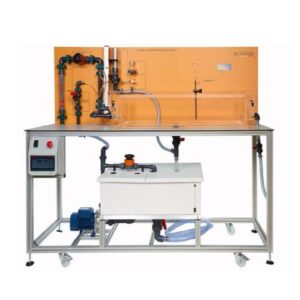TRAINING OBJECTIVES
- Study of the basic principle of separation of solids in suspension by sedimentation tanks
- Visualize and study the process of sedimentation in a continuous basis in a settling tank
- Determination of sedimentation process efficiency for:
– Different solids concentrations
– Different flow rates
– Different positions of the baffle plate
– Different depths of the baffle plate
- Display and study the current lines for:
– Different solids concentrations
– Different flow rates
– Different positions of the baffle plate
– Different depths of the baffle plate
TECHNICAL DATA
Sedimentation tank:
- Material: Methacrylate transparent
- Capacity: 80l approx.
- Dimensions: 1000 x 400 x 200mm
Suspension tank:
- Material: Fiberglass
- Capacity: 120l approx
- Continuous mixing system
Other features:
- Anodized aluminum framework
- Flow control performed by a pressure control system
- Recirculation pump. H =20 + 160 m; Q =21 + 10l/h;
- P =0.75 kW. Ideal for dirty water
- 2x Imhoff cones, 1 liter capacity.
Cleaning brush included
- 2x 1 liter beakers / 1x 2l breaker
- Injection ink system for better experiment visualization.
- Suspension and spoon material included
- Teacher and student experiment notebook included
TECHNICAL DESCRIPTION
According to the characteristics of the suspension (heterogeneous mixture of dispersed solid particles in a fluid), particles can settle down in different ways depending on their density, their concentration in the solution and the density and viscosity of the fluid in which are spread.
The sedimentation tank has a lower mixing section in which a suspension is prepared by adding the additive whose sedimentation can be studied.















